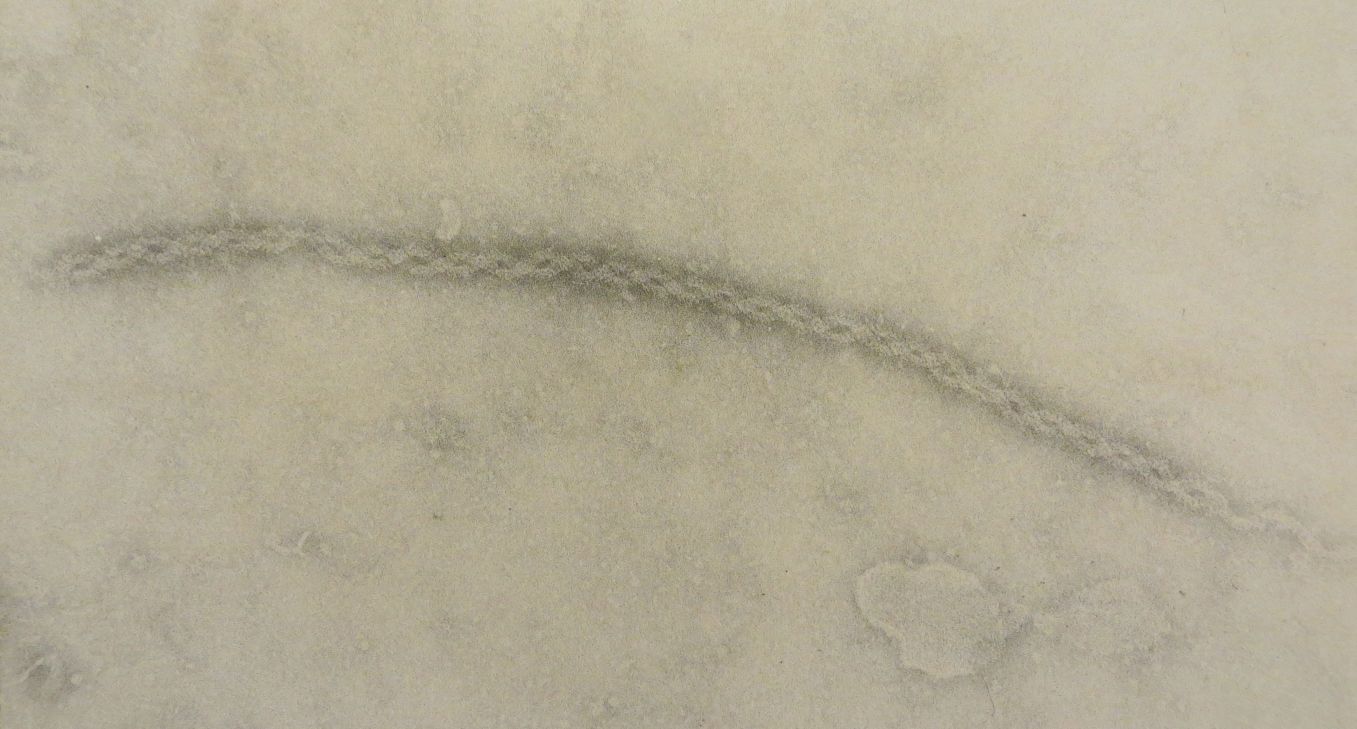
This is an image of a negatively-stained "P-protein" strand (P = phloem) from a tobacco (Nicotiana) plant. I have had this print sitting around since about 1973 because it was my favorite shot of these proteins. Really easy to shoot pics of these: Slice a young tobacco plant in mid stem, and over a minute or so a liquid exudes from the cut stem, much of it coming from the phloem. The exudate is collected in a pipette, diluted, and a tiny drop squirted onto a coated TEM grid (coated with a very thin film of sputtered carbon) and stained with a solution of electron-dense phosphotungstic acid. Remove excess stain via edge of Kimwipe, allow the grid to dry for a minute or two, stick it in the scope and spend half an hour looking around the grid at fairly high mag. Just a few minutes from intact plant to electron beam, which is VERY nice compared with the usual multi-day tedium of prepping TEM specimens for sectioning.
Pretty cool helix, no? The diameter (~20nm or ~200 angstroms) is similar to that of a microtubule. Magnification on my print was 135K and the diameter of the structure measured 5mm on the print, so you can use that to see what the mag is on your computer screen.
The scope was a brand-new one of these: http://www.science.oregonstate.edu/emfa ... y/EM/EM300 and is now probably considered worthy of Smithsonian display.
Edit: "negative" staining means that the stain (phosphotungstic acid) settles in around the biologic structure rather than staining the structure itself. All the dark areas are stain, and the light areas are relative absence of stain, and the pattern of stain reveals the structure of the protein. Biological tissues/structures aren't dense enough to deflect electrons and hence are transparent in a TEM; so in any TEM (transmission EM) image, anything dark in the image is one or more heavy metals (lead, uranium, tungsten) used as a positive or negative stain.